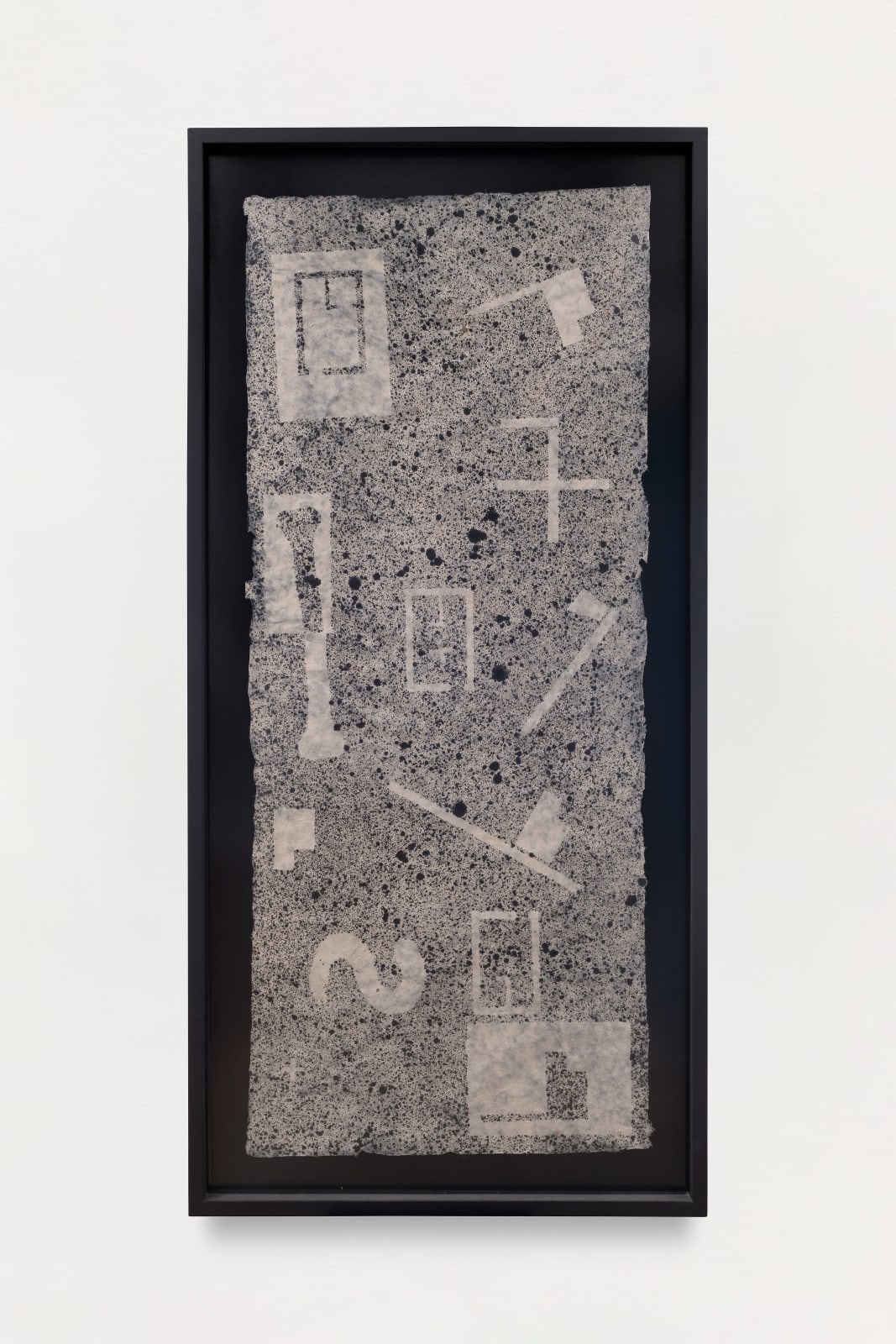Antonio Dias
Untitled | Sem título, 1980s
china ink and collage on handmade Nepalese paper
nanquim e colagem sobre papel artesanal Nepal
nanquim e colagem sobre papel artesanal Nepal
140 x 61 cm
55 1/8 x 24 in
55 1/8 x 24 in
In the 1970s, Antonio Dias encountered artisans papers that captivated his attention, leading him on an extraordinary journey to Nepal, its place of origin. His quest was hindered by hurdles,...
In the 1970s, Antonio Dias encountered artisans papers that captivated his attention, leading him on an extraordinary journey to Nepal, its place of origin. His quest was hindered by hurdles, as the paper wasn't readily available for purchase. This pursuit extended his journey to a remarkable five months, which became an existential turning point for the artist, significantly shaping his practice. Over the subsequent decade, Dias transformed this artisan paper into not just a canvas for his work, but the very essence of his creations. He infused the paper with geometric shapes and an array of colors, resulting in unique artworks that have garnered international recognition, with his pieces finding homes in renowned collections including MOMA and Pompidou.
During this transformative period, Dias immersed himself in a collaborative experience with Nepalese paper artisans. This collective endeavor provided him with invaluable insights into the age-old craft of papermaking, preserved by these artisans who resist modern industrialization. This shared experience profoundly influenced his artistic expression, leading to a synthesis of craft and creativity. Dias' artistic journey also encompassed previous encounters with artisanal practices, as seen in his engagement with textile artisans in Tibet, who specialized in fabric dyeing. This engagement with various artisanal communities has underscored his avant-garde trajectory, revealing a lifelong exploration of craft and culture that has intricately woven itself into his artistic narrative.
During this transformative period, Dias immersed himself in a collaborative experience with Nepalese paper artisans. This collective endeavor provided him with invaluable insights into the age-old craft of papermaking, preserved by these artisans who resist modern industrialization. This shared experience profoundly influenced his artistic expression, leading to a synthesis of craft and creativity. Dias' artistic journey also encompassed previous encounters with artisanal practices, as seen in his engagement with textile artisans in Tibet, who specialized in fabric dyeing. This engagement with various artisanal communities has underscored his avant-garde trajectory, revealing a lifelong exploration of craft and culture that has intricately woven itself into his artistic narrative.
